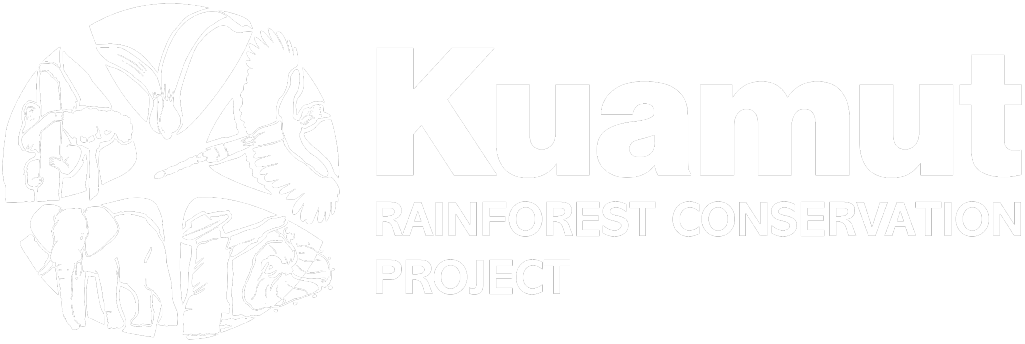Kuamut Rainforest Conservation Project
Protecting and restoring tropical forest in Sabah, Malaysia
The Kuamut Rainforest Conservation Project is a forest carbon project, that is protecting and restoring 83,381 hectares of tropical forest in Sabah.
The project is a public-private partnership between Permian Malaysia, Sabah Forestry Department, Rakyat Berjaya sdn. Bhd. Yayasan Sabah, with operational support from PACOS Trust and South East Asia Rainforest Research Partnership (SEARRP).
Management of the area ensures the long-term sustainable protection and restoration of the forest resource, and the safeguarding of its biodiversity, which includes Bornean Orangutan, helmeted hornbills and other high-conservation value species.
The project also delivers community-designed social development and benefit sharing to the two communities living to the north and northeast of the protected area, following extensive engagement and consultation (including Free, Prior and Informed-Consent).
The Kuamut Rainforest Conservation Project is delivering on three core objectives:
- Climate: Protect and restore the carbon-rich forest, whilst preventing the emissions from the planned deforestation and forest degradation of the area. This will help mitigate the global climate crisis.
- Community: Improve the lives, well-being and sustainable economic opportunities of the communities living around the forest area.
- Conservation: Monitor and research species and ecosystem health and safeguard habitats to increase the chances for tropical forest biodiversity to thrive.
The project is assessed against the science-based and globally recognised Verra Verified Carbon Standard (VCS) and the Verra Climate, Community and Biodiversity (CCB) standard to both demonstrate the project’s scientific rigour and to enable it to generate income from Verified Carbon Units (VCUs), or carbon credits.
- Size: 83,381 ha
- VCU’s generated per year: on average more than 800,000 tCO2e per annum
- Delivering benefits to 3,000 local community members from two village clusters, the Karamuak and Kuamut Cluster.
- Ecosystem type: Lowland and hill mix dipterocarp forest – Protects habitat for 29 mammal and 12 bird referenced on the IUCN Red List and considered as Rare, Threatened or Endangered [RTE] species
- Project additionality: The project area was designated as a production forest (Class II). The area had been repeatedly logged in the past and was designated for further commercial exploitation. Establishing the project has prevented this from happening and is enabling the forest to regenerate.
Projects benefits
CLIMATE
To help address the climate crisis, the project is preventing emissions from deforestation and forest degradation. Protecting the forest will ensure its carbon stores remain locked in the biomass. As the forest regenerates, sequestration will increase the carbon sink.
In the past, the area has experienced a high level of degradation from logging activity. The project has enabled reclassification of the area to strict class 1 protection forest, eliminating the threat of commercial logging. Project activities will ensure continued protection against illegal logging, encroachment and fires.
COMMUNITY
There is no human habitation within the project’s protected forest area. Approximate 10 kilometres north and northeast of the protected area there are two village communities, the Kuamut and the Karamuak.
Both groups were first engaged by Pacos Trust, a Sabah-based indigenous peoples NGO. Pacos Trust undertook extensive Free, Prior and Informed-Consent (FPIC) workshops with all community members, which provided information and answers to questions about the proposed project, the project partners, and the involvement of the local community. Once consent was given, the project team began close collaboration with both community groups and jointly designed the social development program.
The project is an important local employer; it is supporting the development of sustainable local businesses and helping improve health, education and wellbeing through community-designed development programmes.
BIODIVERSITY
Protecting the forest will ensure an important tropical forest habitat is preserved. Science-based conservation programmes are helping with the recovery of threatened species and increase overall biodiversity.
The project team has so far identified: 29 mammal and 12 bird species in the project area that are recognised as rare, threatened or endangered on the IUCN Red List.
Measures to monitor and enhance biodiversity value centre around forest protection and control of hunting threats. The project area is known to support high populations of elephants, banteng and orangutan, and endangered bird species including helmeted hornbill, Bornean peacock pheasant and storms stork.
UN Sustainable Development Goals
Malaysia’s sustainable development priorities are closely aligned with the UN Sustainable Development Goals (UN SDGs). Malaysia assisted in the creation of the UN SDGs and has expressed its strong commitment to the 2030 Agenda and the SDGs overall.
Project activities are assessed in contribution to the goals and targets of the UN Sustainable Development Cooperation Framework, with the goal of making significant progress to support the national and regional UN SDG targets of Malaysia.
The Kuamut Rainforest Conservation Project aims to improve well-being; health services (SDG 3), education 4 (SDG 4), job creation (SDG 1 and 8), entrepreneurship opportunities (SDG 8 and 10), access to clean water (SDG 6), access to energy (SDG 7), climate action (SDG 13), and biodiversity protection (SDG 15).
Map
The Kuamut Rainforest Conservation Project protects 83,381 hectares of tropical forest ecosystems in the Tongod and Kinabatangan districts of Sabah, on Malaysian Borneo.

Gallery



















